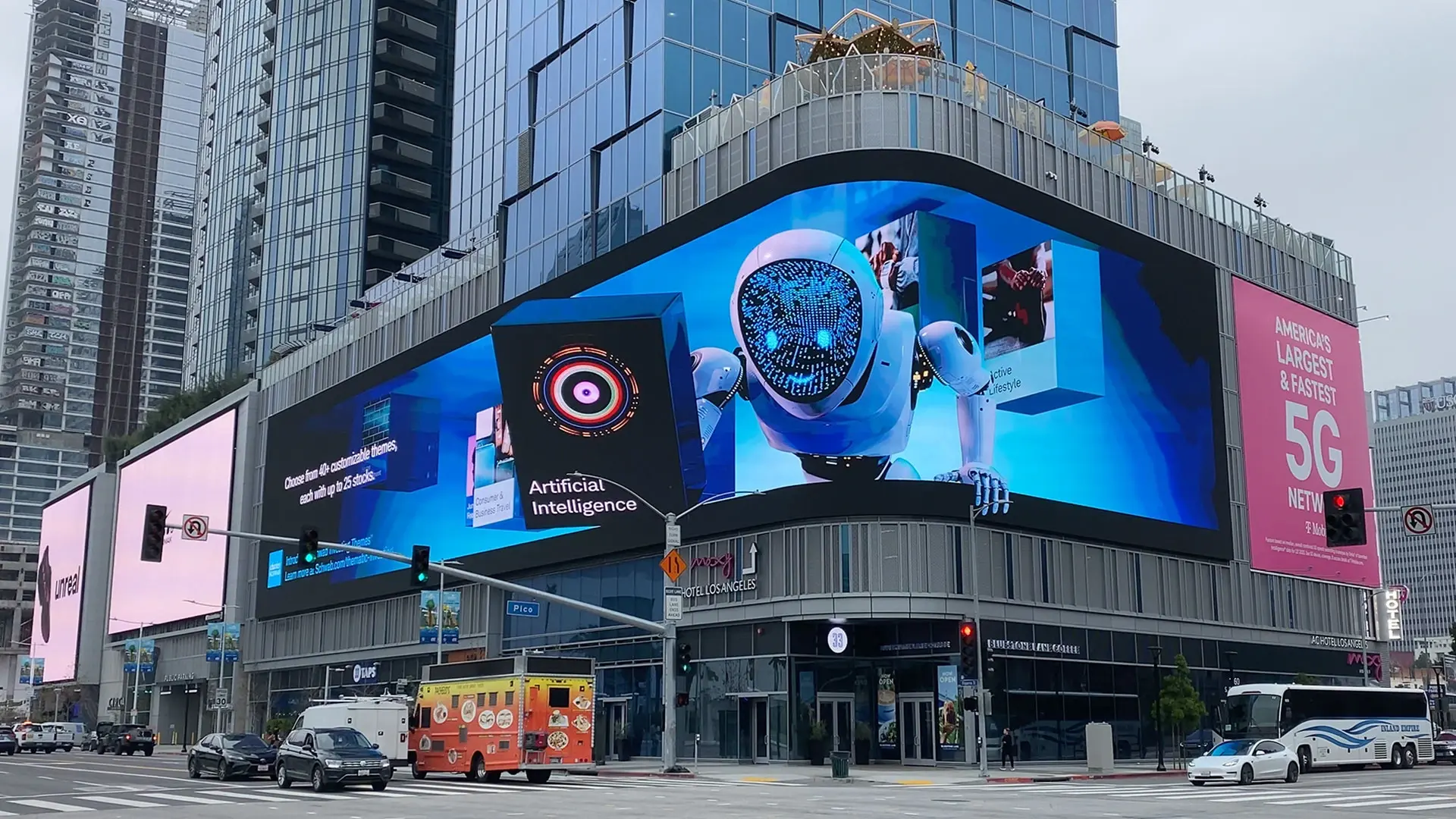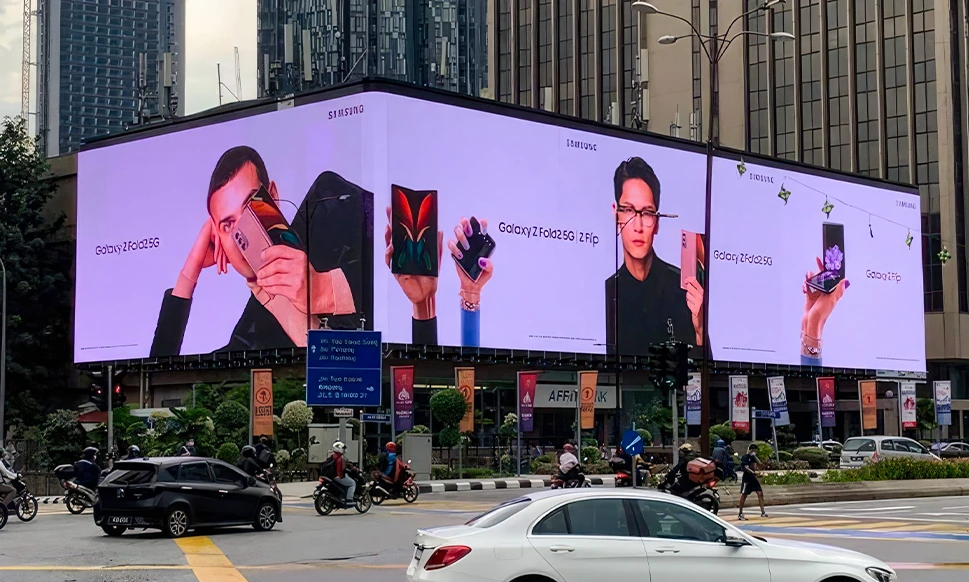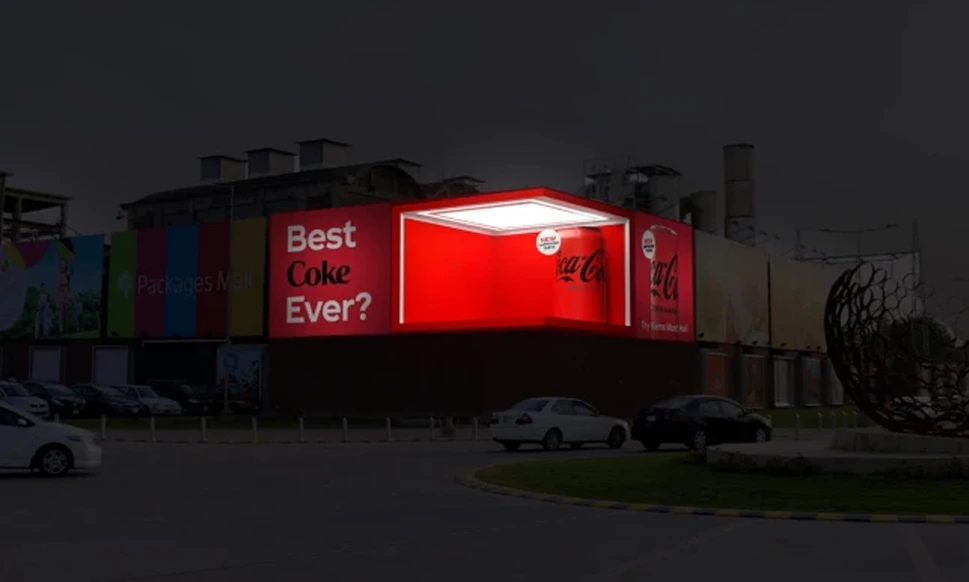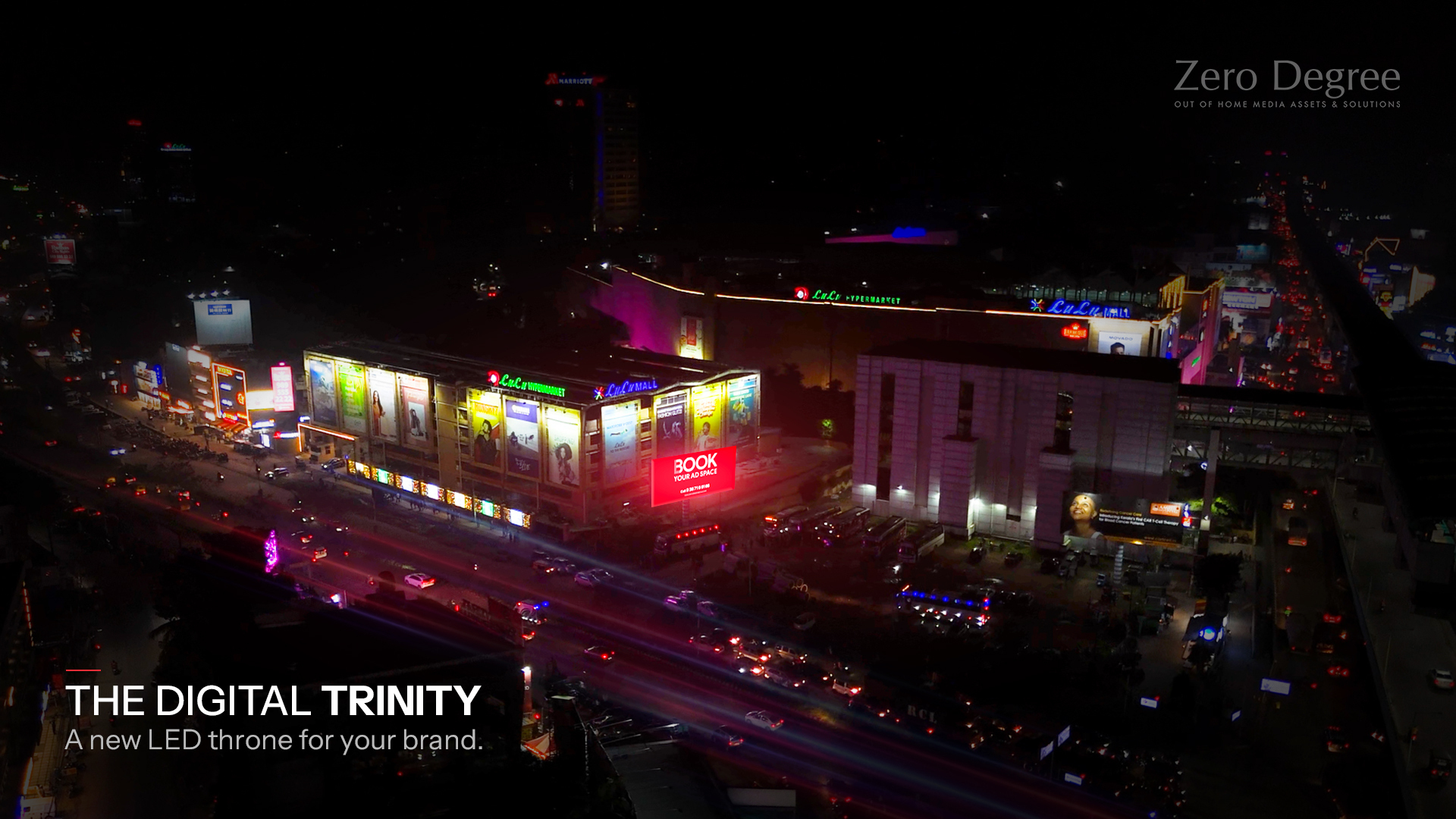

You are on your way to work and the train is late, again! The morning rush is in full swing and you somehow elbow your way out of the train station. The crowd around you is flowing like a river and everyone is in a hurry to get somewhere. Your mind is calculating how many seconds you have left before your boss calls you asking where you are.
And then –
Meeeooow.
It’s soft at first, but unmistakable. You turn, half-distracted, expecting a stray cat. But what you see next short-circuits your sense of logic.
You forget about your job, your boss and everything else because there is a gigantic cat on the side of a tall building!
Not a poster, not a cartoon – a giant, hyper-realistic, breathing, blinking cat, chilling in a digital box like it owns the space. It turns its head. Its fur catches the light. Its tail flicks lazily over the edge of the building like gravity doesn’t matter.
People stop. They stare. Phones go up. Time freezes.
Your brain is smart enough to remind you that it is some kind of a digital display but it can’t figure out why the cat is sticking out of the building… Why is it 3-dimensional!

3D Billboards: The Game Changer in OOH Advertising
What we just mentioned would be an instance of you coming across a 3D Anamorphic Billboard. It might feel like a thing of the future except it isn’t. 3D billboards that integrate 3D technology, known as anamorphosis or forced perspective to achieve a realistic effect, are already grabbing the attention of millions across major cities of the world such as Tokyo, New York and London. Some have even popped up in Indian cities like Mumbai and Kochi. You might have come across viral videos of the same on the internet.
Anamorphic illusion technology makes what’s otherwise flat 2D visuals appear as if they are popping out of the screen or floating in the air, giving viewers a fun and memorable experience. Creating the illusion requires a mix of creative design, advanced technology, and careful calculations to make sure it looks perfect from the right viewing angle. This has easily become a game changer in the Digital Out of Home (DOOH) advertising industry.
The novelty of large 3D billboards coupled with a curiosity about the technologies behind them makes viewers spend more time fixated on the advertisement than they would otherwise spend in front of an LED wall.
The Many Advantages of 3D Billboards
These 3D anamorphic displays are not just mere head-turners, the prospects they unfold often include:
- High Engagement : People don’t just stare at these mega displays, they capture it on their smartphones, share it on social media, and naturally become a topic of conversation.
- Media Coverage : Unique 3D campaigns don’t just stay as a topic of conversation between a few, they often end up as talk of the town, which then gets picked up by mainstream media who catapults it even further.
- Enhanced Brand Recall : Brands that feature on these innovative media often get a lasting impression on the minds of people – it is not just a random brand on a random display.
- Premium Perception : The rarity of 3D billboards naturally shapes a perception in the minds of onlookers that the brands featuring on it must be premium.
- Unlocking New Type of Creatives : Brands get the opportunity to incorporate the 3rd dimension of space to tell their story. This opens a wide range of possibilities for content that can’t be done with regular formats.
The India Story of 3D DOOH Ads
While Asian countries like Japan, South Korea and China were the first to embrace this form of Out-Of-Home (OOH) advertisement in its full glory, 3D anamorphic billboards have eventually found their way to Indian cities as well.
This kind of advertising might seem as quite fitting for a market like India where there are numerous cities bustling with scores of people. But it is to be noted that there are also certain factors that deter the widescale adaptation of the same in India.
3D DOOH is Expensive
Traditional billboards with printed visuals and digital billboards featuring thousands of LED modules pale in comparison to 3D anamorphic billboards. They rely on:
- Ultra-high-definition LED screens, often curved to enhance depth perception
- Powerful content engines to render 3D animations
- Specialized 3D content production (planning, design, animation, mathematical calculations, etc.)
This level of complexity makes 3D anamorphic ads so expensive that even prospective clients might doubt the ROI.
Limited Viewability
A fundamental limitation of anamorphic 3D displays is that they rely heavily on perspective. The illusion works only when viewed from a very specific angle. This makes placement absolutely critical.
Now, while cities like New York, Tokyo, or Seoul offer the perfect setup – tall buildings, wide intersections, and heavy pedestrian traffic – most Indian cities present a very different urban landscape. The streets can be narrow, uneven, or overly congested with vehicles rather than walkable pedestrian spaces.
To make the most impact, a 3D billboard ideally needs to be mounted high on a building and positioned at just the right spot where a large number of people can view it from the optimal angle. That kind of setup is tough to find in most Indian cities. As a result, limited viewability becomes a major barrier to wide-scale adoption.
While the financial and physical aspects of setting up 3D billboards are major challenges for India’s OOH advertising industry, there are a few other hurdles as well. Some of these include:
- High Maintenance Needs
- Climate & Environmental Conditions
- Permits and Licensing Challenges
Does this mean that you won’t be seeing a gigantic 3D cat on a building anytime soon? Not at all! In fact, there are plenty of factors that put India on the path to becoming one of the largest markets for 3D anamorphic advertising technology.

The Impending 3D DOOH Boom in Indian Cities
A fact no one needs reminding of is that India is the world’s most populous country. There are more people to sell to here than anywhere else in the world – and the purchasing power of its citizens is growing rapidly.
More Eyes Than Anywhere Else
Anamorphic technology-backed DOOH billboards are designed to target large gatherings of people at once—and large crowds are the norm in Indian cities. Yes, the cities themselves struggle with not being particularly pedestrian-friendly. However, this is a well-recognized issue, and recent urban planning efforts have begun addressing it. Many Indian cities are undergoing smart city transformations and this creates opportunities for integrating digital billboards into new urban spaces such as metro stations.
Creative Talent Pool at Home
It’s fair to say that Indians are generally tech-savvy, with a large talent pool of skilled professionals in sectors like VFX, design, and AR/VR. Several large media firms already serve clients across the globe, which means content for 3D billboards can be produced locally. This has the potential to significantly reduce production costs.
A Market Ready for Disruption
Indian brands are increasingly seeking media that breaks the norm and helps them stand out. With its high-impact visuals and immersive appeal, 3D DOOH offers the kind of ‘wow’ factor that’s perfect for product launches, movie promotions, and festival campaigns.
At the same time, major players in the out-of-home advertising space, such as Zero Degree, are actively exploring new technologies to offer clients cutting-edge solutions. Since 3D DOOH is still a budding niche, early adopters have a real opportunity to establish themselves as pioneers, accelerating not just adoption but also innovation in the Indian market.
Conclusion: A Future That’s Almost Here
3D billboards may seem like a futuristic concept that belongs to the skylines of Tokyo or New York, but it’s already knocking on India’s door. Yes, there are challenges – be it cost, placement, or infrastructure – but the potential is far too big to ignore. With a rapidly evolving urban landscape, a tech-savvy creative industry, and brands eager to stand out, India is poised to be a major player in this emerging format.
The gigantic cat and more visuals like that might not be present above every intersection just yet – but if the right steps are taken, it won’t be long before 3D anamorphic billboards decorate Indian cities in numbers. The question isn’t whether India can catch up, but rather – how fast it chooses to leap.










